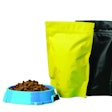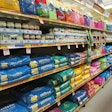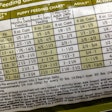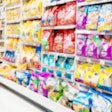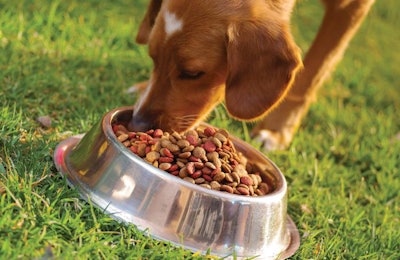
Having a "clean label" is becoming an increasingly popular trend in the human food industry, so it is no surprise that it has grabbed the attention of some in the pet food industry, as well. What is a clean label? Don't expect to find its definition in the AAFCO (Association of American Feed Control Officials) Official Publication!
Briefly, the primary attribute of a clean label is that the ingredients are declared in simple, recognizable terms, without any chemical-sounding names or other implications that the ingredients are less than wholesome, pure foodstuffs. This is a laudable goal, provided it is done in accordance with applicable regulations. For example, declaring beef meal or beef by-products as "beef" for the sake of simplicity, or failing to disclose the presence of substances that are not clearly exempt from declaration under the law because they may be unappealing to the purchaser, does not make for a clean label. Rather, it is just a false and misleading one.
About the Clean Label Project
There is much more to the clean label concept. Regardless, the Clean Label Project (cleanlabelproject.org) does not seem to have anything to do with the "label" at all. Rather, its stated mission is to "educate the consumer so they can make informed choices on cleaner options every time they shop." This is accomplished by conducting a battery of analyses for toxins and other potential contaminants in hundreds of commercial pet foods. Depending on the results, the tested foods are then rated with what must be presumed to be a complex algorithm into three categories: 5 stars (the best), 3 stars or 1 star (the worst). Further, the tested foods are all ranked, so readers can easily view how the pet food they are purchasing compares to other varieties and brands that have been tested.
There are no actual analytical data provided on the site. Rather, everything is reported in relative terms; i.e., how a pet food compares to others overall. One cannot discern on what basis a particular item was ranked; e.g., whether it was the pesticide residues or heavy metal content that caused it to be low on the list, or something else entirely. Further, notwithstanding a few tidbits of information; e.g., that chromium can cause cancer and kidney damage, it is extremely difficult to put these facts into perspective. In other words, without numbers it's impossible to tell whether the chromium concentrations among pet foods are materially different from each other, or if in fact any of those tested are anywhere close to what could potentially cause adverse effects.
When this website was first viewed a few weeks ago, it was interesting to note that a majority of the "top 10" (i.e., the cleanest) pet foods were manufactured by some very prominent members of the industry (i.e., the companies that bloggers love to hate). Also, the bulk of the bottom 10 were from some of the companies often held in high esteem by these same people. While this caused some on the internet to opine that this was just another vast "Big Pet Food" conspiracy, there was no indication of bias in the ranking, as some companies had listings at both extremes. Regardless, now it's the smaller "boutique" pet foods that appear to predominate both the best and worst categories. The big-name pet food company products still appear to be listed, but they seem to have gravitated more to the middle of the rankings. The reason for this apparent reassessment is unclear.
The point of the Clean Label Project
So, what's the point of all this? As per the stated mission, it is anticipated that consumers will make judgment on purchase of a particular pet food based on its rating on the site. The website notes, "94 percent of people said if they knew their pet food had toxins that they would change brands." That's not surprising. What is not commonly understood by the public, however, is the fact that by its very nature, 100 percent of all food (including human food, not just pet food) is going to contain substances with a potential for adverse health consequences.
Whether a substance should be of true concern or not depends on the particular substance, its form (one form may elicit greater toxicity than another) and the potential level of exposure. Yes, a product that is high in multiple categories of toxins can potentially cause cumulative effects, but choosing a pet food based solely on its overall ranking without sufficient detail might cause some to select products which may not be appropriate for that animal or dissuade purchase of a suitable food for no valid reason.
As a not-for-profit enterprise, the purveyor hopes that consumers who visit the site will donate money to help further its cause. Perhaps more potentially lucrative for the project, though, is the suggestion that companies should join forces with it. By committing to the goals of this organization, the pet food company would be required to institute standards as dictated by the project, most likely well beyond any regulatory threshold, including FSMA (the Food Safety Modernization Act). In return, its products would likely be viewed more favorably on the site, if not certified by the Clean Label Project, and hence be allowed (presumably for a fee) to bear a "seal of approval" to that effect on its packaging.
For more insights by Dr. Dzanis






